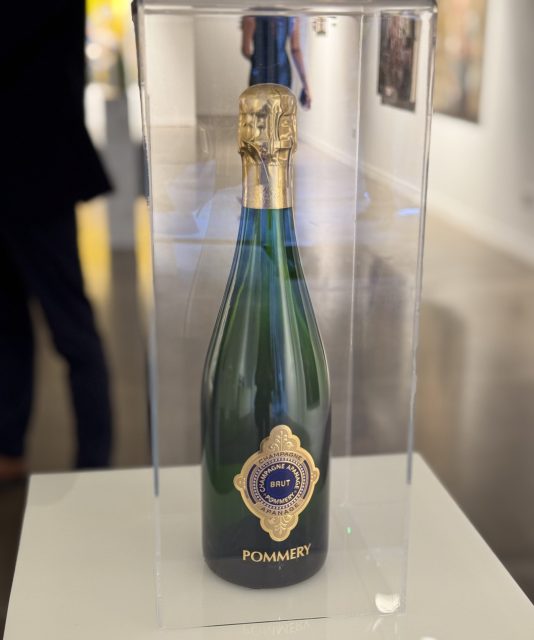This website uses cookies so that we can provide you with the best user experience possible. Cookie information is stored in your browser and performs functions such as recognising you when you return to our website and helping our team to understand which sections of the website you find most interesting and useful.
Pommery launches ‘Swiss Army knife’ for gastronomy
Last night was the UK launch of Champagne Pommery’s Apanage 1874 Brut NV, a wine designed to be as versatile as possible when it comes to food pairings. Louis Thomas finds out more from chef de cave Clément Pierlot.

“This cuvée is very particular, as it marks the 150th anniversary of the creation of the first brut Champagne in 1874 – we made two cuvées for the anniversary: one is called 150, and only 10,000 bottles were made of it, the second one is a more ambitious project, started seven years ago, to make a new brut for gastronomy,” Pierlot shared.
It was for the latter Champagne that members of the wine trade had gathered in JD Malat Gallery in Mayfair to taste – somewhat fitting, given Madame Pommery developed brut Champagne with the English market firmly in mind.
“The idea is to make some very new, very modern in terms of taste and in terms of packaging.”
Regarding the latter point, Apanage 1874 has been packaged in a lighter bottle.
“It would have been simple to make a special shaped bottle, but we didn’t, it’s a normal bottle, but it’s lighter…We’ve spent a lot of time and a lot of money on this design, so please enjoy it,” Pierlot later joked.
When it comes to what’s inside, Pierlot, the 10th chef de cave in Pommery’s history, has inherited certain things from his predecessors.
“For taste, the idea was to make food pairings very easy – the wine is driven by that target, but strongly rooted in Pommery’s traditions. One of those traditions is perpetual reserve, which means that each chef de cave holds back some wine and adds some every year to the blend, so 16% of the base of this wine is the perpetual reserve.”
“The second tradition is the combination of vintage wines – every time we make a vintage, like the Cuvée Louise, we hold one part in reserve,” he continued. “This wine is a blend of 2012, 2015 and 2018 – the idea is to make something with depth and complexity.”
The blend is largely Pinot Noir (45%) and Chardonnay (40%), with the remainder being Meunier.
“If you want to make a wine for gastronomy you need to find the tastes of sweetness, salinity (which is linked to the chalk), acidity, and bitterness…and, if you are very open minded, maybe even some umami. They have to be in harmony,” he argued.

Speaking to the assembled guests later, Pierlot said: “We used a lot of ingredients to make it simple to pair.”
When asked about any particular pairings for Apanage 1874 that stood out, Pierlot suggested that the Champagne’s key asset is its versatility.
“I would present this wine as a Swiss Army knife of food pairings. You can be very inventive with pairings, beyond conventional ones like lobster and oysters – imagine foie gras, or duck, and even some desserts. When you are in a restaurant and you are not sure if you want to order a bottle of something because you’re not sure it will be appropriate for the whole dinner, well, this allows you to have the same wine with the starter, main course and dessert.”
And Pierlot is also keen that the wine, which has an RRP of around £65, is served in a vessel that can maximise what it has to offer.
“As an aperitif it’s also ok, but it’s more for gastronomy – that’s why it’s being served in a white wine glass here,” he said. “It is a wine that has a lot of things to say, so you need to give it ample space to allow it to express itself.”
Related news
Surrey County Cricket Club partners with Pommery
Pommery launches Japanese rockstar's Champagne in the UK
Champagne Pommery launches new World Collection in time for Christmas

